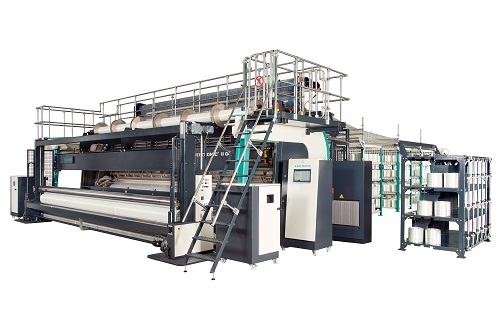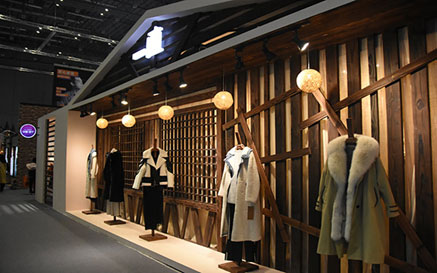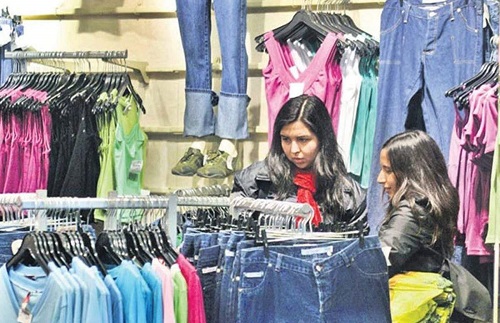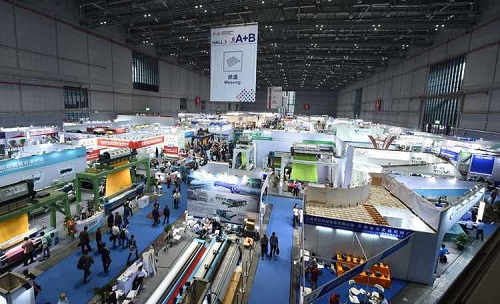FW
ILO says a group of employers’ organizations, unions and major brands in the garment industry have collaborated with them to support manufacturers affected by the coronavirus outbreak. Under this agreement, brands and retailers commit to paying manufacturers for finished goods and goods in production. They will also commit to maintaining open lines of communication with supply chain partners about the status of business operations and future planning.
Brands and retailers who have signed up to the call to action include Adidas C&A, H&M, Inditex, M&S, Primark, Under Armour and PVH. The group called on governments and financial institutions to accelerate access to credit and income support.
ILO further revealed that an international working group will be set up within the next two weeks to elaborate the steps to deliver on the commitments.
Walter Loeb, former retail analyst and now consultant, expects most stores to reopen in May or June but in staggered waves. Fashion brand Mango has already started reopening its stores. The Spanish retailer plans to open 16 additional Dutch shops on top of 42 in Germany. Another 27 stores will reopen in the Czech Republic, Latvia, Georgia, Cyprus and Ukraine.
Most retailers are readying their back-to-school and fall assortments, or at least those orders that either have been reduced or not fully canceled. According to Loeb, retailers that plan to open stores locations later in the summer, either late August or early September, will need to stock merchandise better suited for fall and early winter.
N Murugesan, President, Southern India Spinners’ Association (SISPA) says his association has requested the state government to provide immediate remedial measures, including sanctioning six equal installments for payment of electricity bills for March 2020, irrespective of the consumers (LT, LTCT and HT) without levying belated payment surcharge (BPSC)/any other additional surcharges or otherwise it may be deducted from the additional current consumption deposit (ACCD).
The association also requested the state government to advice TANGEDCO to collect minimum electricity charges for the recorded (actual) demand and not for the sanctioned demand during the lockdown period. SISPA also requested the government to adopt the same procedure for at least six months to overcome the financial crisis after the lockdown period. Murugesan revealed the 40 days nationwide lockdown, closing of borders between districts and states has affected the highly labour, capital- intensive textile spinning sector and has affected the revenue of the entire textile value chain. Hence, the association is seeking support at this critical moment to safeguard the industries and the millions of the workers in the nation.
Abercrombie & Fitch Co is entering resale market with the help of ThredUp . The partnership, part of ThredUp’s Resale-as-a-Service, allows shoppers to send their used or no longer desirable clothing and accessories to the online consignment shop in exchange for Abercrombie or Hollister gift cards. Shoppers can send in women’s or children’s apparel, accessories and footwear from any brand and will receive merchandise gift certificates from Abercrombie in exchange.
Abercrombie’s interest in the program is part of the retailer’s sustainability initiatives and efforts to keep clothing out of landfills. The retailer is also struggling with the prolonged social distancing measures in North America and Europe. Its stores — more than 850 around the world, many of them located in malls — remain closed until further notice. Earlier this month, the retailer furloughed the majority of its in-store associates.
Consumers who wish to participate in this initiative must first request a “clean-out kit” from thredup.com. The kit includes a prepaid shipping label to mail clothes to ThredUp. After the value of the goods has been determined, ThredUp will distribute gift cards from the Abercrombie brand of choice. All Abercrombie & Fitch brands — Abercrombie Kids, Hollister Co. and intimates brand Gilly Hicks, in addition to the nameplate brand — are included in the deal.
 Perfectly timed for Interfiliére in January 2020, Karl Mayer has developed a collection of warp knitted jersey fabrics titled jersey evolution. The production equipment used is the high-performance warp knitting machine HKS 2-S.
Perfectly timed for Interfiliére in January 2020, Karl Mayer has developed a collection of warp knitted jersey fabrics titled jersey evolution. The production equipment used is the high-performance warp knitting machine HKS 2-S.
The particular benefits of these new fabrics include a soft, sleek feel that’s fine and smooth to touch, with high elasticity but resistance to permanent loss of shape, as well as smooth, free-cut edges. These characteristics are backed by specially chosen machine configurations and lapping technology: the very good recovery capacity of the bi-elastic fabric is created by implementing a two-needleoverlap.
Thanks to a special meshing of the elastane threads, firm and straight edges are created which have a very low or zero tendency to curl. The chosen lapping, together with a high machine gauge, ensure a smooth, fine surface and a flowing fall – or a look and feel customary to circular knit fabrics. But in comparison to circular knit, the manufacturing process of the highly elastic, warp knitted power jersey is substantially more productive. A HKS 2-S boasts the same output as around 2.5 circular knitting machines. This high-performance warp knitting machine also offers advantages with regards to spare parts. The needle leads in warp knitting machines can last up to six times longer than those in circular knitting machines.
The first two months Jan and Feb 2020 witnessed garment production drop by 36.61 percent, paid-in investment reduced by 50.2 percent. The domestic retail sales had fallout by 20.5 percent while the retails of garment had a sharp down by 33.2 percent. The online retail too, for the wearable commodities decreased by 18.1 percent. The export of apparel had a 20 percent loss as against the corresponding months last year.
According to the news briefing, today on April 22, 2020 by China National Garment Association (CNGA), about release of ‘Development Report of China Garment Industry 2019-2020’, the first two months, Jan –Feb 2020 in general saw significant fall on front of all the accounts of economic performance, except e-commerce.
However, the economic performance in the first two months of 2020 shows obviously a better picture than March, as after the first two months of the new year that saw an impact on the industry on account of traffic restrictions and “stay-at-home” policies to curb the virus spread.
The year 2020 starts low
 The first two months of 2020 witnessed garment production of 2512 million pieces, a two-digit drop of garment production by 36.61 percent, and the paid-in investment reduced by 50.2 percent. The domestic sales for all the retails in the country, known as “social consumption commodity retail income” in the official terms for statistics, amounted to 5.213 trillion Yuan, a fallout by 20.5 percent while the retails of garment and its attributes registered 110.3 billion Yuan, a sharp down by 33.2 percent. That was the retails for both bricks-and-mortar and websites, real and virtual combination. If we look at the online in particular, we see that the e-commerce retail for the tangible goods has a slight growth by 3 percent to reach 1.1233 trillion Yuan in the whole society, among which the wearable commodities decreased by 18.1 percent. Aside from the domestic gloom, the export of apparel is not promising at all for $16.062 billion, 20 percent loss as against the corresponding months last year.
The first two months of 2020 witnessed garment production of 2512 million pieces, a two-digit drop of garment production by 36.61 percent, and the paid-in investment reduced by 50.2 percent. The domestic sales for all the retails in the country, known as “social consumption commodity retail income” in the official terms for statistics, amounted to 5.213 trillion Yuan, a fallout by 20.5 percent while the retails of garment and its attributes registered 110.3 billion Yuan, a sharp down by 33.2 percent. That was the retails for both bricks-and-mortar and websites, real and virtual combination. If we look at the online in particular, we see that the e-commerce retail for the tangible goods has a slight growth by 3 percent to reach 1.1233 trillion Yuan in the whole society, among which the wearable commodities decreased by 18.1 percent. Aside from the domestic gloom, the export of apparel is not promising at all for $16.062 billion, 20 percent loss as against the corresponding months last year.
Five important Indicators of Economic Performance
According to the report summary, the five important indicators, on the basis of National Bureau of Statistics, given to represent a picture of the economic performance are; production, domestic consumption, export, investment and profitability of the garment sector in China.
Based on the above-stated performance of the economic mainstays, the industrial profitability of the garment manufacturing sector is affected, to the extent that profits dropped by 42.14 percent to arrive at 5.496 billion Yuan out of the total business sales income for 148.791 billion Yuan which also decreased by 28.14 percent. As a result, the profit/sale rate is leveled at 3.69 percent, 0.89 percentage point down as opposed to January and February in 2019. 
Speaking of the year of 2019, here is the brief annual report of garment industry with these important indicators given below:
1. Production:The total production of apparel was done with 24.472 billion pieces, down by 3.28 percent.
2. Domestic market: The wearable goods on retail sales amounted 977.81 billion Yuan, up by 2.6 percent, out of total retails for all the consumption commodities in the country, which added up to 41.1649 trillion Yuan, up by 8 percent from January to December last year.
According the national stats reported by National Bureau of Statistics, the total online retails for tangible goods reached 8.52395 trillion Yuan, up by 19.5 percent, wherein, the apparel and its attributes online sales increased by 15.4 percent.
3. Export: According to General Administration of Customs, China exported 151.37 billion dollars worth of apparels in 2019, down by 4 percent as compared with the year before.
4. Investment: The actually-paid investment increased by 1.8 percent.
5. Profitability: The profit rate was 5.45 percent for total profit of 87.283 billion Yuan against total sales income of 1601.033 billion Yuan, 0.38 percent down to compare with that in 2018, which is not a surprise if we see its sales income and profit totals both down in growth, 3.45 percent and 9.75 percent respectively.
Contributed by Mr. ZHAO Hong
He is working for CHINA TEXTILE magazine as Editor-in-Chief in addition to being involved in a plethora of activities for the textile industry. He has worked for the Engineering Institute of Ministry of Textile Industry, and for China National Textile Council and continues to serve the industry in the capacity of Deputy Director of China Textile International Exchange Centre, V. President of China Knitting Industry Association, V. President of China Textile Magazine and its Editor-in-Chief for the English Version, Deputy Director of News Centre of China National Textile and Apparel Council (CNTAC), Deputy Director of International Trade Office, CNTAC, Deputy Director of China Textile Economic Research Centre. He was also elected once ACT Chair of Private Sector Consulting Committee of International Textile and Clothing Bureau (ITCB)
 The fashion industry has been hit hard by COVID-19 outbreak that has upended industries around the world. As ‘The State of Fashion 2020 Coronavirus Update’ by McKinsey reveals, the global revenue for the fashion industry is expected to drop by 27 to 30 per cent this year. Fashion powerhouses around the world are taking on this battle against the pandemic in a crucial pivot from producing clothes to manufacturing protective masks, gowns, and other supplies. For instance, Bvlgari has diverted its production to manufacturing of 6,000 bottles of hand sanitizers per day. Similarly, L’oreal and LVMH are producing hand sanitizers to combat the shortage of supplies.
The fashion industry has been hit hard by COVID-19 outbreak that has upended industries around the world. As ‘The State of Fashion 2020 Coronavirus Update’ by McKinsey reveals, the global revenue for the fashion industry is expected to drop by 27 to 30 per cent this year. Fashion powerhouses around the world are taking on this battle against the pandemic in a crucial pivot from producing clothes to manufacturing protective masks, gowns, and other supplies. For instance, Bvlgari has diverted its production to manufacturing of 6,000 bottles of hand sanitizers per day. Similarly, L’oreal and LVMH are producing hand sanitizers to combat the shortage of supplies.
Fashion retailers to suffer due to low demand
The increasing trend of prioritizing necessary items over discretionary items spells bad news for offline fashion retailers most of whom have been forced to close their stores. Online retailers are also suffering with their sales declined by almost 20 per cent in Europe, 30 per cent in the US, and 15-25 per cent in China. This trend is expected to continue for the rest of 2020 as the industry will take a long time to recover from these economic, financial and social losses of the pandemic.
Moderate rise for home and sportswear apparels
In future, demand for home-wear and sports-wear items will see a moderate rise as trend of work from home trend will continue to grow. This will present brands with an opportunity to re-evaluate and reset previous strategies and start afresh. They will have to emerge either as a revived player or fade away.
brands with an opportunity to re-evaluate and reset previous strategies and start afresh. They will have to emerge either as a revived player or fade away.
Effective communication to help grab attention
Post the COVID 19 pandemic retailers will have to communicate their campaigns in an effective way to grab customer attention. They will also have to implement a website overlay, hello bar or a welcome banner to inform their visitors about discounts they are offering.
McKinsey also says, post-COVID 19, online shopping is expected to grow by 18 per cent while social channels will grow by 24 per cent. This will give retailers a great opportunity to reach out to their offline shoppers by using tools like Insider’s Journey Builder.
Retailers can introduce a combination of discounts + free shipping to improve customer engagement online. They can attract consumers with their discount strategies and hard to resist minimum value offers for free shipping.
Strategies retailers can adopt
Retailers can tap the growing stay-at-home culture by creating top-trending and relevant product collections crafted for the occasion. They can use platforms like Insider’s InStory to promote these collections on website in the form of stories. They can also design and deliver their experiences by asking the right questions on Insider’s Maven. They can also convey the changes in their shipping and return policies through this app.
More and more consumers are moving online, and this trend will continue even after things will get back to normal. Only brands that respond rapidly and innovatively to these changes will survive.
New tools across the value chain
To cope with new restrictions and overcome the damaging impact of the pandemic, brands must introduce new tools and strategies across the value chain. Fashion players must harness these innovations and scale up those that work in order to make radical and enduring changes to their organizations—and to the wider industry—after the dust settles.
While these short term measures are important in weathering out this storm, the fashion industry is at a crucial junction. Fashion marketers will need to introduce long-term strategies and adopt sustainable tactics that look beyond the immediate future.
 Private consumption accounts for about 58 per cent of India’s GDP, which is likely to grow to around $3,000 billion by the end of FY20. Of this, about 48 per cent is spent on merchandise shopping while the remaining $875 billion is spent on a range of services. Traditional mom & pop stores form the largest share of sales. India currently has 17 million independent retailers which are likely to grow to 20 million by 2025.
Private consumption accounts for about 58 per cent of India’s GDP, which is likely to grow to around $3,000 billion by the end of FY20. Of this, about 48 per cent is spent on merchandise shopping while the remaining $875 billion is spent on a range of services. Traditional mom & pop stores form the largest share of sales. India currently has 17 million independent retailers which are likely to grow to 20 million by 2025.
Food and grocery to remain unaffected
Among these, food and grocery retailers will hold the largest share. These retailers currently account for about $550 billion of the $825 billion consumer spending on merchandise. Even in future, this spending is likely to be least affected, either in terms of volume consumed across different sub-segments, or on retail channels selling food and grocery.
Unsold inventories to eat into textile and apparel retailers’ profits
The next big category, in consumer expenditure is textile and apparel which accounts for about $65 billion of spending on merchandise. This category is likely to suffer the most from the pandemic as manufacturers are likely to be saddled with unsold inventory. Consumers are unlikely to spend on clothing and accessories even after the nationwide lockdown ends on May 4, 2020.
likely to suffer the most from the pandemic as manufacturers are likely to be saddled with unsold inventory. Consumers are unlikely to spend on clothing and accessories even after the nationwide lockdown ends on May 4, 2020.
Easy going for consumer electronics and home furnishings
The consumer electronics and durables segment — worth about $50 billion, will be least impacted. It is also likely to be the first sector to bounce back during the upcoming festival season between September-October 2020. Sellers of home furnishings and other lifestyle products will also have a relatively easy FY21 as consumption by volume will not decline drastically during the entire April 2020-March 2021 period.
Finances of all big retailers are likely to be stressed in FY21 and FY22. However, traditional and independent retailers are likely to be least affected as they own their stores, have few employees and can quickly recalibrate their inventories to align with consumer demand or preference.
Brick & mortar stores face fixed costs, zero sales
Most affected by the pandemic will be organized brick-and-mortar retailers as they had to either shut down or hardly got footfalls due to restrictions on the movement of people. These retailers have high fixed costs by way of rentals and common area maintenance charges. They also have to pay salaries at retail front end, head-office staff, and utilities.
In the next six-eight quarters, monthly sales of most organized retailers will be reduced though they will still have to incur the same (or nearly the same) monthly fixed costs. They may also have to face margin erosion when they are compelled to liquidate some of their inventory through aggressive discounts.
The situation is likely to be similar for e-commerce players too. As consumer sentiment is likely to be depressed for months to come, their monthly gross margin intake will be severely affected though their fixed costs are likely to remain nearly the same.
FDI to boost future retail growth
Therefore, the government should allow 100 per cent foreign direct investment in all retail formats and all channels. Its policies should not hinder the growth of the sector even as it works to raise capital and merge/sell businesses within India or anywhere else.
 In light of the current coronavirus (Covid-19) pandemic, ITMA ASIA + CITME 2020 has been rescheduled, despite receiving strong response from exhibitors. Originally slated to be held in October, the combined show will now take place from 12 to 16 June 2021 at the National Exhibition and Convention Centre (NECC), Shanghai.
In light of the current coronavirus (Covid-19) pandemic, ITMA ASIA + CITME 2020 has been rescheduled, despite receiving strong response from exhibitors. Originally slated to be held in October, the combined show will now take place from 12 to 16 June 2021 at the National Exhibition and Convention Centre (NECC), Shanghai.
According to show owners CEMATEX and Chinese partners, the Sub-Council of Textile Industry, CCPIT (CCPIT-Tex), China Textile Machinery Association (CTMA) and China Exhibition Centre Group Corporation (CIEC), the postponement is necessary due to the coronavirus pandemic.
Fritz P. Mayer, President of CEMATEX, said: “We seek your understanding as this decision has been made with the safety and health concerns of our participants and partners in mind. The global economy has been severely affected by the pandemic. On a positive note, the International Monetary Fund has predicted that there would be global economic growth at 5.8 per cent next year. Hence, it is more prudent to look at a date around mid of next year.”
participants and partners in mind. The global economy has been severely affected by the pandemic. On a positive note, the International Monetary Fund has predicted that there would be global economic growth at 5.8 per cent next year. Hence, it is more prudent to look at a date around mid of next year.”
Added Wang Shutian, Honorary President of China Textile Machinery Association (CTMA), “The outbreak of the coronavirus has caused a severe impact on global economy, and also affected the manufacturing sector. Our exhibitors, especially those from other parts of the world, are deeply affected by the lockdowns. Therefore, we believe that the combined show with the new exhibition dates would be timely when the global economy is predicted to improve. We would like to thank the exhibitors who have applied for space for their strong vote of confidence in the combined show.”
In spite of the pandemic, at the close of space application, almost all the space reserved at NECC has been filled. The show owners will create a wait list for the late applicants and if necessary, to secure additional exhibition space from the venue to accommodate more exhibitors.
Buyers to ITMA ASIA + CITME 2020 can expect to meet industry leaders who will showcase a wide array of latest technology solutions that will help textile makers to become more competitive.
ITMA ASIA + CITME 2020 is organised by Beijing Textile Machinery International Exhibition Co Ltd and co-organised by ITMA Services. Japan Textile Machinery Association is a special partner of the show.
The last ITMA ASIA + CITME combined show in 2018 welcomed the participation of 1,733 exhibitors from 28 countries and economies and registered visitorship of over 100,000 from 116 countries and regions.
In a recently held video conference with Masahiro Yagi, president of Yagiharu Co., Uzbek officials discussed the supply of textile items to Japan and options for exporting goods using various transportation modes. Yagi said a trial batch of textile products from Uzbekistan had been delivered to Japan. Both sides agreed to continue joint work.
Members of the Uztextilprom Association will participate in future video conferences, according to a report in an Uzbek media outlet.
The parties also considered the possibility of Yagi's visit to Uzbekistan in September 2021 to continue negotiations and discuss relevant agreements.












